Updated on May 28, 2024

“Every day we’re saying, ‘How can we keep this customer happy? How can we get ahead in innovation by doing this?’ …because if we don’t, somebody else will.”
Bill Gates
If Bill Gates is worried about customers leaving, then where does that leave the rest of us?
Buying your product or service is only the first step in a customer’s relationship with your business. If you want your business to thrive, you must focus on building more of these long-term relationships.
One way to do this? Provide stellar customer support!!
However, this customer support is not just in the form of an agent who is always on the call or a chatbot that provides pre-fed responses.
Customer support has evolved, and as the customer base evolves and more and more millennials become part of it, the expectations are also in a constantly changing state.
According to a survey by Gartner, 62% of Millennials require an unofficial knowledge base (such as a subreddit, Twitter, or YouTube video) as a self-service option for service issues, even with 24/7 customer support available.
This is where in-app customer support comes in.
In this blog post, we are going to learn about:
- What is in-app support?
- Importance of in-app customer support.
- Essential in-app support tools.
- Best practices and examples for in-app customer support
- Challenges associated with developing in-app customer support
- Future of in-app customer support
Let’s begin with the very definition.
What is in-app support?
“When a user does not have to navigate away from an application or a task to seek support, where help content and in-app guidance is embedded directly into the application, then this type of support is called in-app support.”
While this definition is fluid and not set in stone, it pretty much sums up what in-app support is all about.
Effective in-app support encompasses features like chatbots, knowledge-bases, self-service portals, which lets users access help resources, communicate with support agents, and resolve issues without having to leave the app environment.
Now that we have the definition let us see how important in-app customer support is.
Importance of in-app customer support
Businesses must prioritize in-app support to differentiate themselves, foster customer loyalty, and drive long-term growth. Some of the key reasons why in-app support is crucial include:
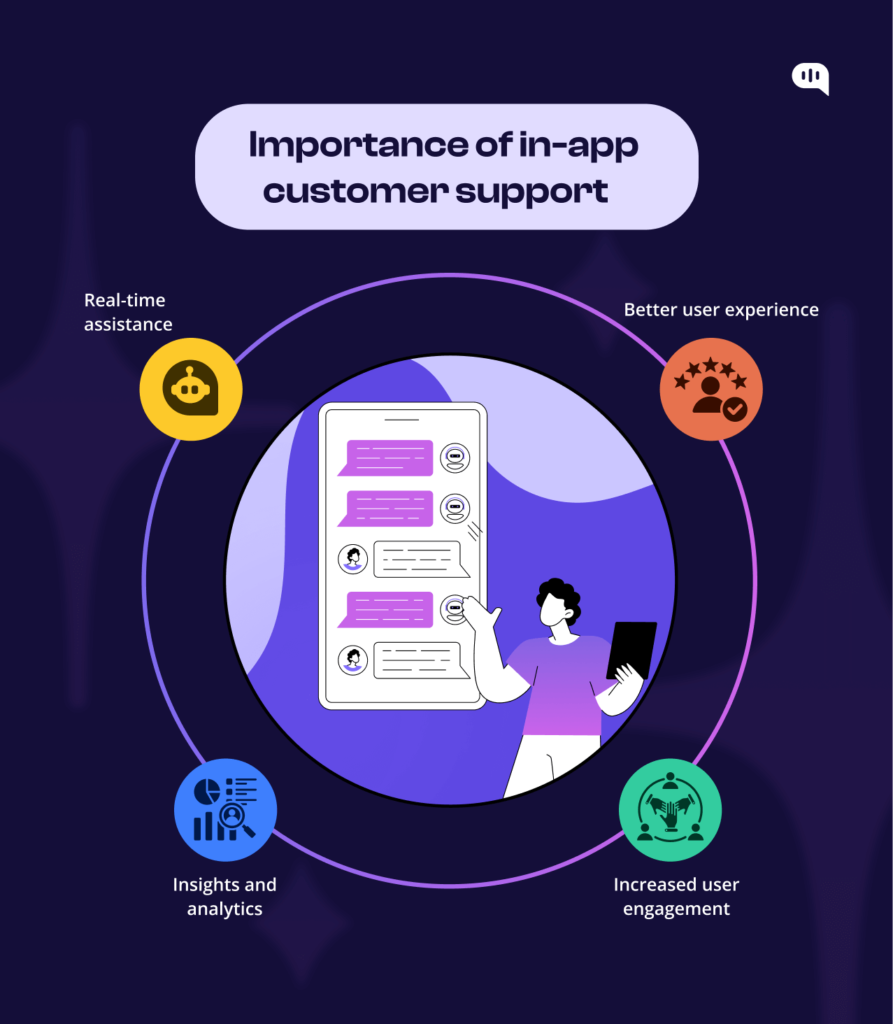
- Real-time assistance: Features like live chat and chatbots will help users get immediate assistance, answering their questions in real-time. This responsiveness can be particularly useful in time-sensitive situations or when addressing critical issues.
- Better user experience: Users don’t need to navigate away from the app if they get access to in-app support, resulting in a smoother and more cohesive experience. This minimizes frustration and drives overall satisfaction.
- Insights and analytics: When users use in-app support, they also leave valuable feedback that can be used to improve the product, enhance support resources, and refine the overall customer experience strategy.
- Increased user engagement: Offering effective in-app support will help reduce customer churn and improve retention rates. When a user can quickly resolve an issue, they are more likely to continue using the app and be engaged.
As you can see, in-app customer support is a crucial business function that is no longer good to have. And we are talking with data and statistics to back up this claim.
In fact, the global growth
So, what are some of the essential in-app support tools?
We will take a look at this in the next section.
Essential in-app support tools
Here are some of the most essential tools that fall under the category of in-app support.
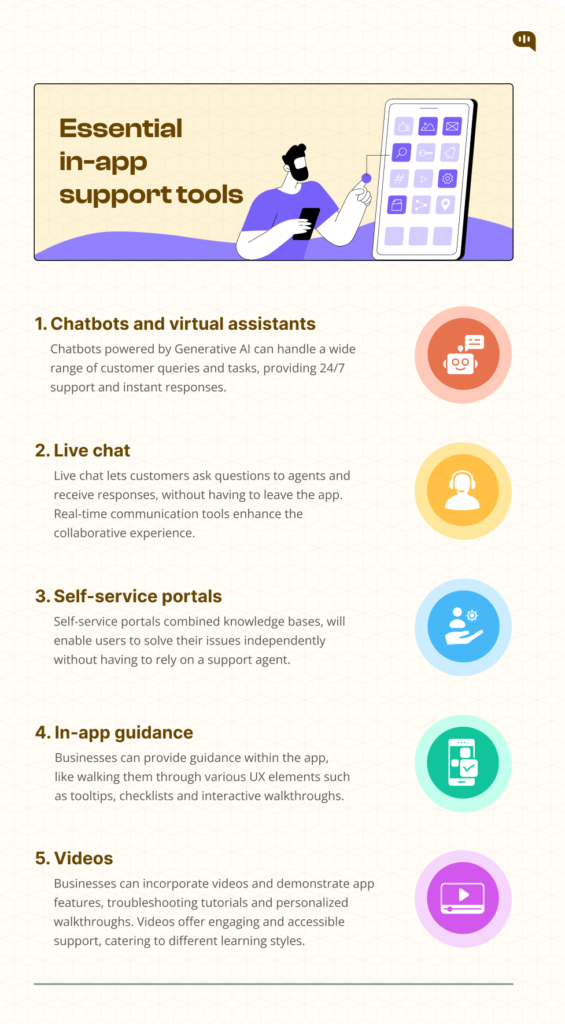
- Chatbots and virtual assistants: Chatbots, especially those powered by Generative AI, can handle a wide range of customer queries and tasks, providing 24/7 support and instant responses. Answering FAQs, guiding users through processes, and answering routine queries are just some of the use cases of chatbots. Kommunicate, Ada. cx, Tidio, etc. are some of the noted chatbot companies that use.
- Live chat: Live chat lets customers ask questions to agents and receive responses, without having to leave the app. Real-time communication tools with features such as live-sharing and co-browsing enhance the collaborative experience of problem solving.
- Self-service portals: Self-service portals, combined with comprehensive knowledge bases, will enable users to solve their issues independently without having to rely on a support agent. Some of these self-service portals include searchable FAQs, how-to guides, tutorials, and interactive walkthroughs.
This is backed by numbers, which say that over 67% of the customers in a survey prefer self-service over speaking to a company representative.
- In-app guidance: In a lot of cases, businesses can provide guidance within the app, like walking them through various UX elements such as tooltips, checklists, and interactive walkthroughs. This type of guidance is a great way to make users familiar with the software’s capabilities without the need to give them formal training. Some of the popular tools that offer in-app guidance include Whatfix, Pendo, and UserGuiding.
- Videos: Video tools are a great way to anticipate the needs of the users and provide instant support. Businesses can incorporate videos and demonstrate app features, as well as troubleshoot through step-by-step tutorials and personalized walkthroughs. Videos offer engaging and accessible support, catering to different learning styles. Analyzing video engagement can help in optimizing content for better user assistance. A few common names that use videos in their in-app guidance include WalkMe and AppCues.
These are just some of the essential tools that you can use to provide in-app support. But it is not just important to have these tools at your disposal. You need to know when and where to use them, which is where the best practices while providing in-app support come in.
Best practices for providing in-app customer support, with examples
Here are some of the best practices that will help organizations improve their user experience and deliver superior in-app customer support.
- Contextual and proactive support: Whether it is a mobile or web app, personalizing support on the basis of user behavior and data will go a long way in enhancing the customer experience. For example, Spotify has a brilliant in-app messaging feature that gives contextual assistance based on a user’s listening history, proactively suggesting playlists.
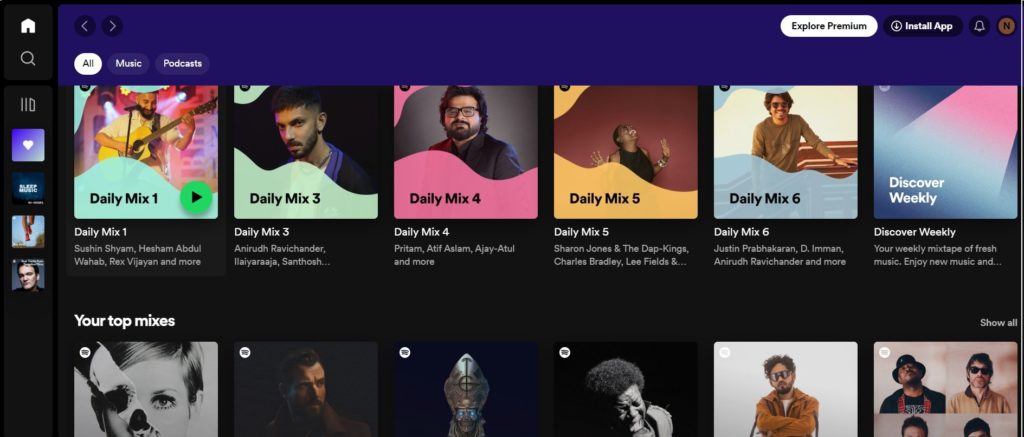
- Seamless integration: Businesses should ensure that their in-app support is seamlessly integrated into their app’s design and workflow. One good example that we came across was Slack, the communication software that companies of all sizes use. Slack’s in-app help center seamlessly blends with its interface, giving users the ability to access support without disrupting their workflow
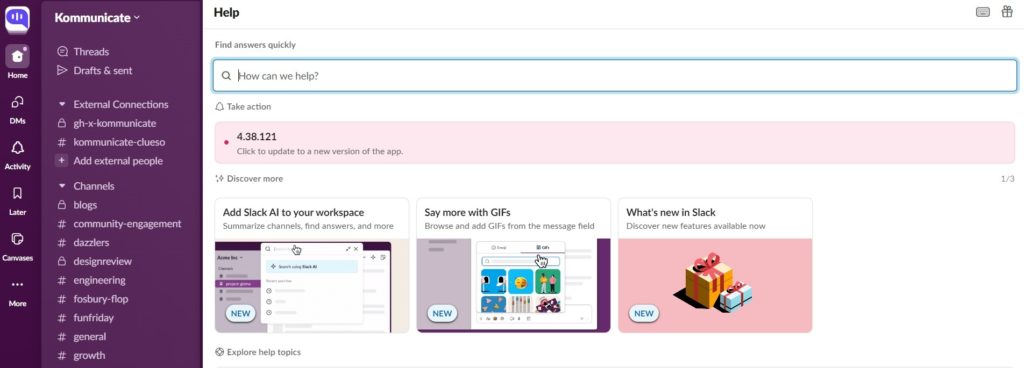
- Security and Privacy: Many a times, customers will be transmitting their private information over your app or website, and the onus is on the business to secure these communication channels. Make sure that there are good data protection measures in place. Banking apps like Chase and Bank of America have good in-app messaging and authentication systems in place, since they deal with sensitive financial information.
- Multilingual support: Businesses today must keep their global audience in mind while designing or deploying an app or a website, and offer multilingual support. Companies can take a leaf out of Duolingo’s in-app support, which is available in various languages. Duolingo thus makes sure that its customers get support in a language that they are comfortable in.
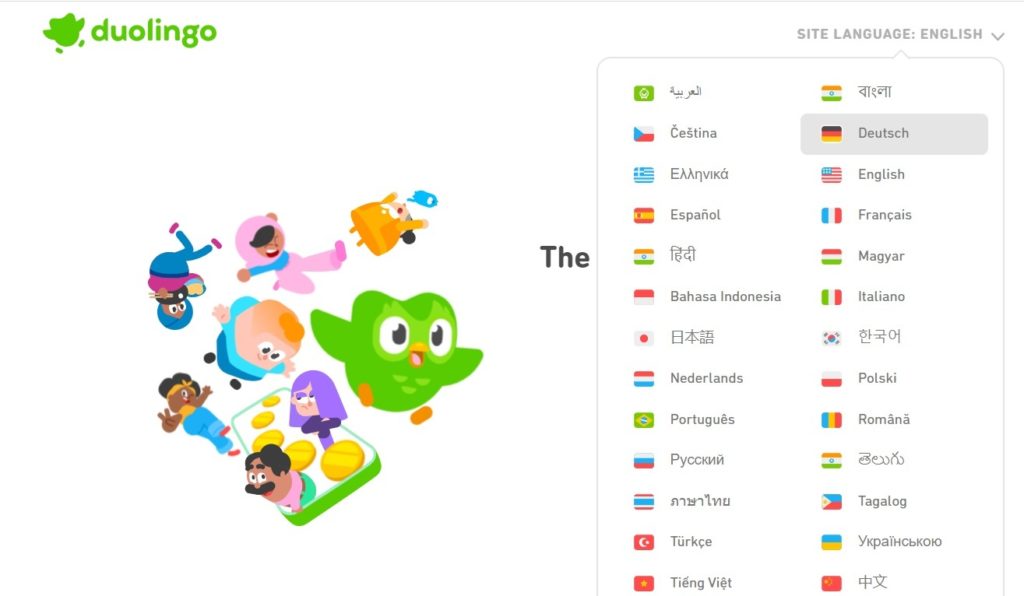
- Self-help resources: Comprehensive self-help resources will help users to find answers to questions they have by themselves. This will reduce the need for direct support interactions while also providing convenience and improving accessibility. Dropbox has an excellent in-app knowledge base that gives access to searchable articles, tutorials, and interactive guides.
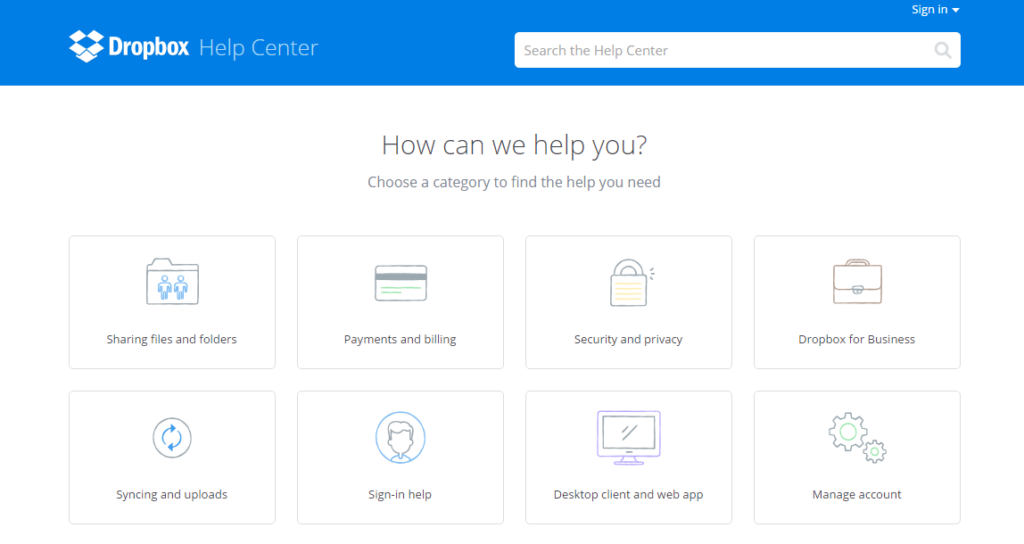
Some of the other best practices include providing collaborative support and gathering user feedback for continuous improvement. Whenever an organization is implementing in-app support, make sure to keep these best practices at the top of the checklist.
However, developing a good in-app support experience does come with its own set of challenges and risks. Here are some of them:
Challenges associated with developing in-app customer support
- Data privacy: In-app support generally involves handling a lot of sensitive data, like personal information or account details. Businesses must ensure that there are proper data encryption and secure communication channels in place, or risk being legally and financially vulnerable.
- Scalability: With apps, there is always the issue of scalability. In-app support systems must ensure that they are able to handle the increasing traffic, without compromising on the performance.
- Omni-channel consistency: Businesses should ensure that they maintain a consistent experience across multiple support channels (in-app, web, email) which means that they require robust integration and centralized data management.
- UX integration: Businesses must seamlessly integrate the support features into the app’s design and workflow. This requires balancing functionality with an intuitive and non-intrusive UX.
- Resource-intensive nature: Maintaining and developing in-app support features are usually resource-intensive. They require investment in technology, personnel, etc., which can be a bit resource-intensive and out of reach for smaller organizations.
Businesses must proactively address these challenges and implement appropriate measures to mitigate the risks and deliver a high-quality in-app support experience.
Despite these challenges, the future of in-app support is exciting, and we are now going to look at how in-app support is going to evolve over the next few years.
Future of in-app customer support
The future of in-app support is poised to be increasingly personalized, with businesses integrating emerging technologies and becoming more proactive than ever before. Some of these futuristic trends include:
- Augmented reality (AR): Utility companies such as Verizon are using Augmented Reality (AR), which allows technicians to provide remote guidance through overlays on a customer’s camera view.
- Self-learning systems: Leading companies such as Netflix and Amazon are in the process of making self-learning systems that continuously improve based on past customer interactions. This improves the support quality over time.
- Conversational AI: More and more companies are incorporating Conversational AI and voice assistants within their mobile applications, allowing customers to handle transactions and get support using natural language.
The future of in-app support, like you see, is exciting. We can’t wait to see how more and more organizations are going to adopt emerging technologies like Generative AI and take in-app support to new heights.
Bringing it all together
By using these tools listed above and following the best practices, companies today can deliver personalized, efficient and convenient assistance directly within their applications. Investing in in-app support not only enhances customer satisfaction and loyalty, it drives long-term success and growth. As technology continues to evolve, businesses that give priority to in-app support will definitely find themselves with an edge over the competition.






